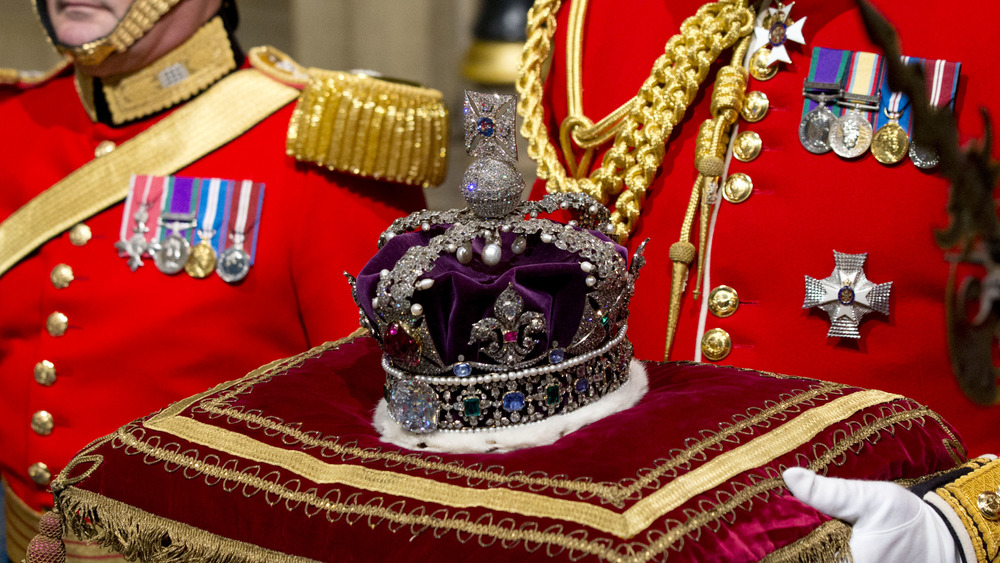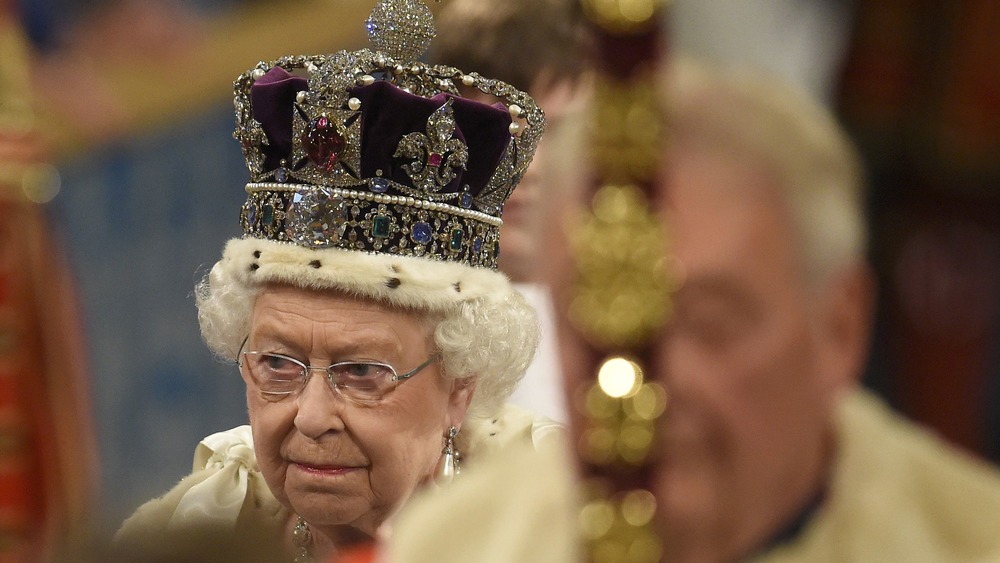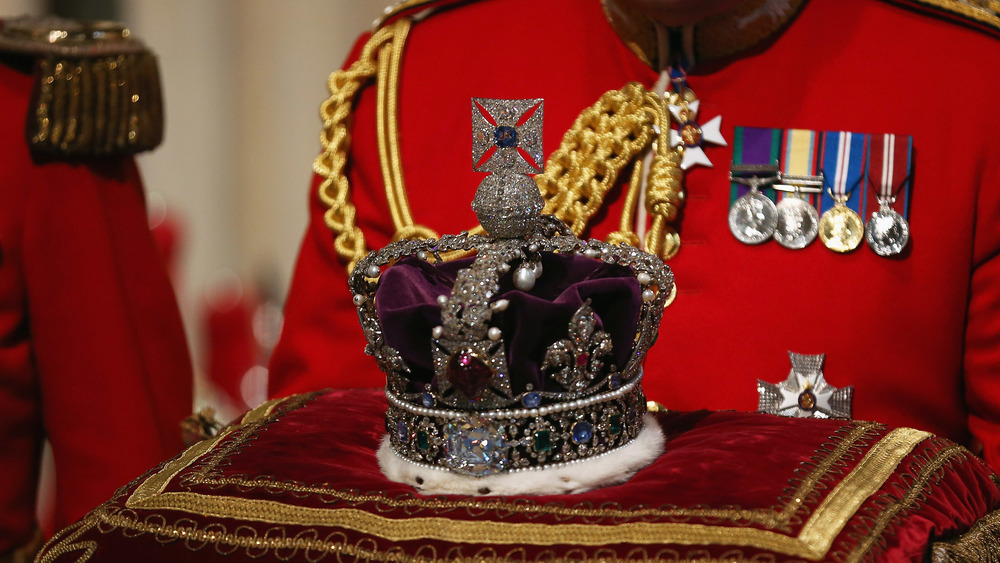Here's Why The Black Prince's Ruby Is Believed To Be Cursed
Even if you're familiar with the history of England's crown jewels, you might be surprised to hear that a few of them are rumored to be cursed. For instance, the Black Prince's Ruby, which the Royal Collection Trust states is the large, irregular red stone mounted on the front cross of Britain's Imperial State Crown, is known to have a particularly stark history. It is believed that following 1367's Battle of Najera, the ruby made its way into the hands of Edward, Prince of Wales — aka the Black Prince. (Per World History Encyclopedia, the name likely stems from his choice of black armor and shield). It was allegedly a gift from Don Pedro, King of Castile. Here's a bit more information about this beautiful blood-red stone and the stories behind why the Black Prince's Ruby is believed to be cursed.
According to The Arkenstone, the Black Prince's Ruby is not in fact a ruby. The stone is a 170-carat cabochon red spinel that measures nearly two inches long. There is a smaller true ruby, however, mounted in gold, plugging a small hole near the top of the stone, a permanent reminder of its time worn as a pendant. Diamond Buzz notes that the Black Prince's Ruby is thought to have been mined in what is now Tajikistan, and it now sits above another famous gem, the Cullinan II Diamond, called the "Second Star of Africa."
The Black Prince's Ruby made its way from India to England
While the Black Prince's Ruby is now a hallmark of the British crown jewels, it has a long history before it made its way into the hands of the English monarchy. As noted by the Royal Collection Trust, the story of the stone begins with the aforementioned Black Prince.
As The Arkenstone explains, the Black Prince's Ruby has a storied history that begins in India, when it is recorded in the 14th century as a gem that once belonged to Abu Sa'id, the last Sultan of Granada, who lost the stone along with his life. According to Diamond Buzz, the gemstone was stripped from Abu Sa'id by Don Pedro the Cruel, the ruler of Seville, Spain, in 1366. The story goes that after a series of battles, Abu Sa'id arranged to surrender to Don Pedro in Castile. After being welcomed as guests, however, the sultan and all of his companions were murdered, and Don Pedro claimed for himself the large red stone he found on Abu Sa'id.
It's commonly thought that Don Pedro's confiscation of the blood-red stone is what kickstarted the gem's curse, bringing bad luck and untimely death to its owners. In fact, The Arkenstone notes how Don Pedro soon found himself at war with his brothers before going bankrupt and dying, though he didn't die with the Black Prince's Ruby in his possession.
Cursed through the Middle Ages, now a prized crown jewel
According to The Arkenstone, it was Edward of Woodstock, the Black Prince of England, who helped Don Pedro defeat a brother, Henry of Trastámara, in a contest to rule Castile. After their victory in 1367, per Diamond Buzz, Edward was rewarded by Don Pedro with the same ruby-red stone taken from Abu Sa'id. Unfortunately, Don Pedro died just three years later, and Edward died before inheriting the English throne. So, the gem passed to Edward's son, King Richard II, who was murdered when he was just 21 years old.
The Arkenstone further notes that the Black Prince's Ruby passed through the hands of several English rulers, who died under tragic circumstances, before being inherited by the Tudors, then the Stuarts. Several rulers may or may not have experienced the curse, including Queen Mary of Scotland and Charles I, who were put to death, and James II, who lost the throne and was exiled. Such bad luck has only added to the belief that the Black Prince's Ruby might be cursed. Nevertheless, it now enjoys a place of prominence on the British Imperial State Crown and is one of the most recognizable jewels in the entire royal collection. Indeed, in 1919's "The Crown Jewels of England," Cyril Davenport and George Younghusband wrote: "The question is often asked: 'What is the value of this stone?' And the answer may safely be given that it is priceless, for no amount of money can buy it."
England's Historic Royal Palaces website tells us that the thought-to-be-cursed Black Prince's Ruby can be seen as part of the crown jewels display in the Tower of London.


